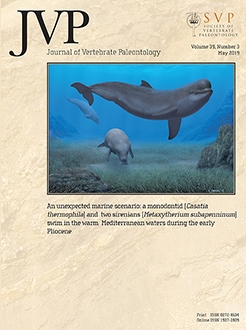Within the Twin Mountains Formation, the Proctor Lake dinosaur locality in central Texas is distinct from other Early Cretaceous localities by having an abundance of vertebrate fossils representing a low-diversity assemblage. However, it has yielded two small-bodied crocodyliforms, Wannchampsus kirpachi and Tarsomordeo winkleri, gen. et sp. nov. This new species is represented by a single partial skeleton with a complete dentary, trough-shaped mandibular symphysis, amphicoelous vertebrae, nearly square dorsal osteoderms, and gracile, elongated limbs. In addition, limb morphology indicates a parasagittal posture, an attribute for a terrestrial lifestyle that could have allowed T. winkleri to fill an ecological niche as an active predator of nesting dinosaurs and other small prey. A phylogenetic analysis places this new taxon within Eusuchia as a member of Paralligatoridae and the sister taxon to Paralligator major and Rugosuchus nonganensis, providing further evidence for the presence of this clade in North America. This new Proctor Lake crocodyliform expands the taxonomic diversity of the Early Cretaceous units of central Texas and provides additional insight into the paleoecology of the Proctor Lake dinosaur nesting site.
How to translate text using browser tools
24 October 2019
Small Terrestrial Crocodyliform from the Lower Cretaceous (Late Aptian) of Central Texas and Its Implications on the Paleoecology of the Proctor Lake Dinosaur Locality
Thomas L. Adams
ACCESS THE FULL ARTICLE






